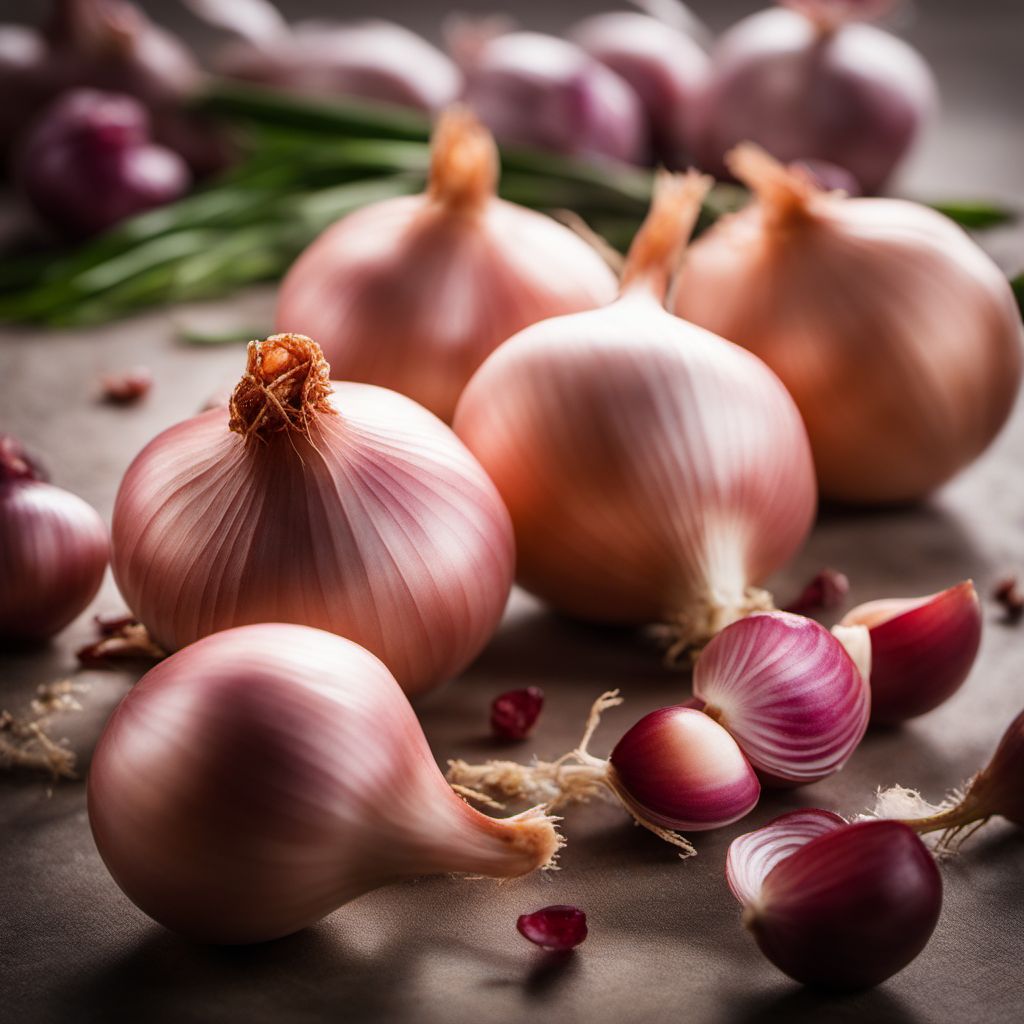
Ingredient
Shallots and similar-
The Versatile Allium Delights
Shallots, along with other alliums like onions and garlic, belong to the lily family. They have a milder and sweeter flavor compared to onions, with a hint of garlic. Shallots are small, elongated bulbs with a coppery-brown skin and white flesh. They have a crisp texture when raw and turn soft and sweet when cooked.
Origins and history
Shallots have a long history and have been cultivated for thousands of years. They are believed to have originated in Central or Southeast Asia and have been used in various cuisines around the world. Shallots are highly valued for their unique flavor and are often used in French and Asian cooking.
Nutritional information
Shallots are low in calories and fat but rich in vitamins and minerals. They are a good source of vitamin C, potassium, and antioxidants. They also contain compounds that have been linked to various health benefits, including anti-inflammatory and antimicrobial properties.
Allergens
There are no known allergens associated with shallots.
How to select
Choose shallots that are firm and heavy for their size. Avoid ones that have soft spots, sprouts, or mold. Look for bulbs with dry, papery skins that are free from blemishes. Shallots with a uniform shape and color are generally of better quality.
Storage recommendations
To store shallots, keep them in a cool, dry, and well-ventilated place. Avoid storing them in the refrigerator, as the cold temperature can cause them to become soft and lose flavor. Shallots can be stored for several weeks to a few months.
How to produce
Shallots can be easily grown in home gardens. They prefer well-drained soil and full sun. Plant the bulbs in the fall or early spring, and harvest them when the tops start to yellow and dry out.
Preparation tips
Shallots can be used in a variety of dishes, including salads, dressings, sauces, soups, stews, and stir-fries. They can be sautéed, roasted, caramelized, or used raw for a milder flavor. To prepare shallots, peel off the skin and chop or slice them according to the recipe instructions.
Substitutions
Onions can be used as a substitute for shallots, although they have a stronger flavor. If you prefer a milder taste, you can use a combination of onions and garlic in place of shallots.
Culinary uses
Shallots are widely used in French cuisine, particularly in classic dishes like Coq au Vin and Béarnaise sauce. They are also commonly used in Asian cuisines, such as Thai and Vietnamese, where they add a subtle sweetness to stir-fries and curries.
Availability
Shallots are cultivated in many countries around the world, including France, Indonesia, Thailand, and the United States. They are commonly available in grocery stores and supermarkets.

